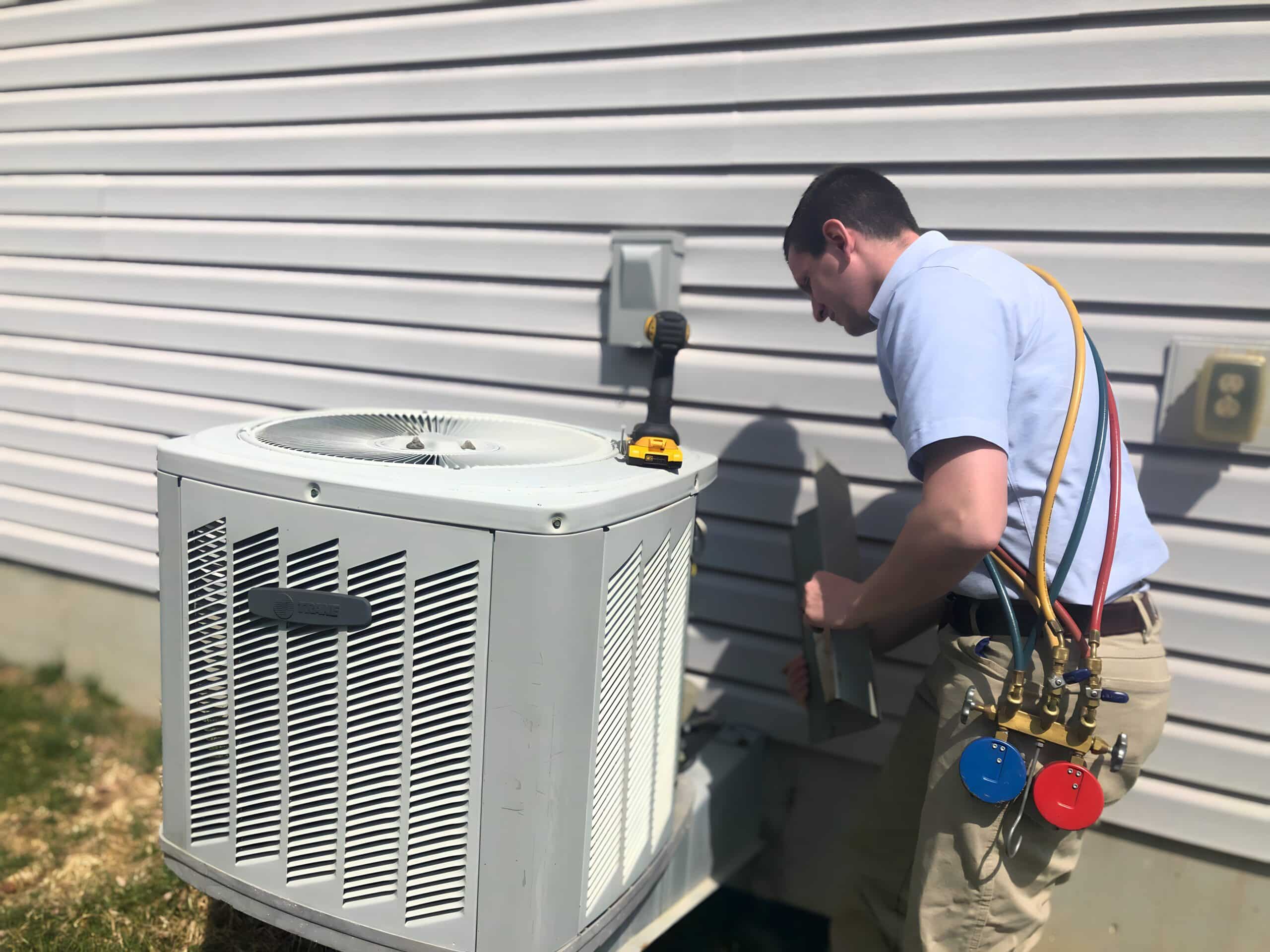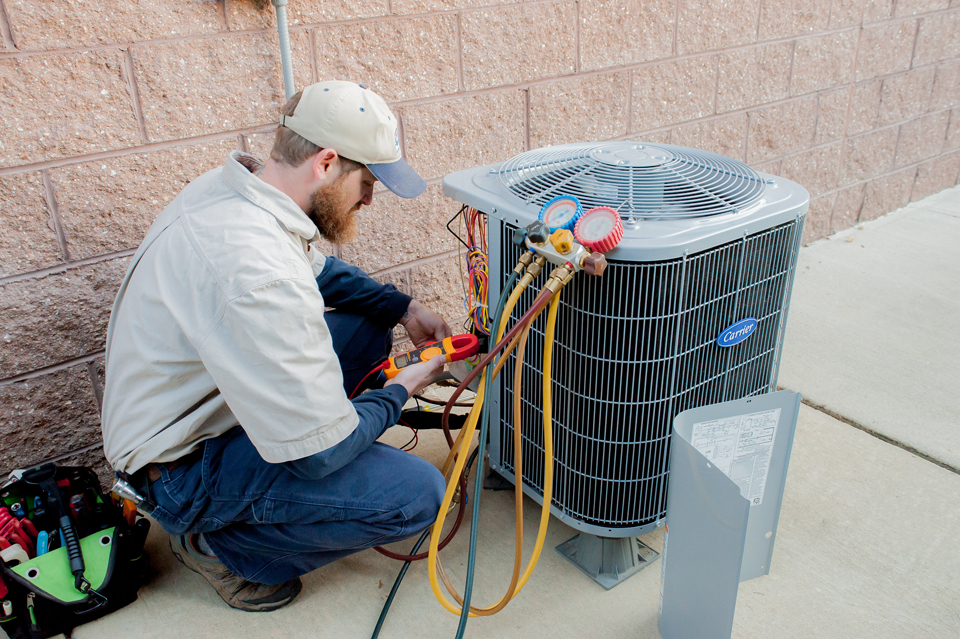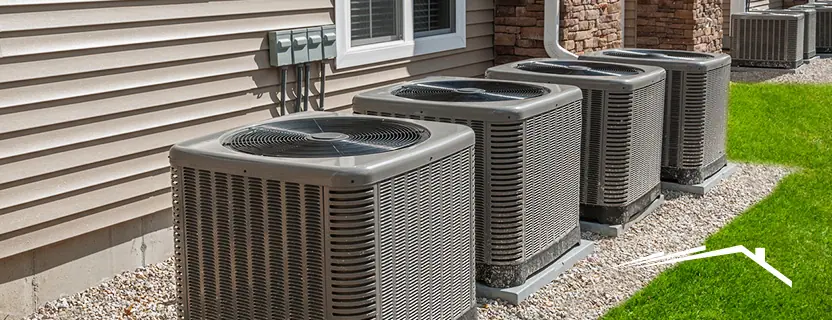Exactly How a Heatpump and Furnace Job With Each Other to Maximize Your Home's Home heating Performance
Understanding exactly how a heatpump and furnace work with each other is vital for homeowners seeking reliable heating options. Each system has its strengths, giving a well balanced method to home comfort. The heat pump masters moderate temperatures, while the furnace supplies rapid heat during extreme cold. This synergy not only reduces power expenses however likewise enhances the lifespan of both devices. What elements affect this collaboration, and just how can homeowners maximize their advantages?
Comprehending Warm Pumps: Just How They Function
Numerous individuals might be unfamiliar with their inner workings, warmth pumps play a necessary role in contemporary heating systems. These gadgets operate by transferring warm from one place to one more, making use of the principles of thermodynamics. In cooler months, a heat pump extracts warmth from the outdoors air, ground, or water, and transfers it indoors to warm up the home. On the other hand, throughout warmer months, it can turn around the procedure, working as an ac unit by getting rid of warmth from inside to the outside.Heat pumps are composed of an evaporator, growth, condenser, and compressor shutoff. The refrigerant within the system takes in heat as it evaporates at reduced temperature levels and stress. The compressor then raises the stress and temperature level of the cooling agent, allowing it to release heat as it condenses. This efficient process can significantly decrease power usage compared to traditional home heating techniques, making warm pumps a sustainable option for environment control in homes.
The Duty of Heating Systems in Home Heating
Heaters play a crucial role in home heating by offering a reputable source of warmth throughout the cooler months. They run by creating warmth via burning or electric resistance, dispersing it throughout the home using air ducts or glowing systems. The performance of a heating system is usually gauged by its Annual Gas Usage Effectiveness (AFUE) rating, which indicates exactly how efficiently the device transforms fuel right into heat.Furnaces can make use of different energy resources, including all-natural gas, propane, oil, or electricity, permitting property owners to select the most ideal alternative for their needs. Unlike heat pumps, which may struggle in severe chilly, heaters preserve consistent performance, ensuring that interior temperature levels continue to be comfortable despite outside problems. Additionally, modern-day heaters commonly come equipped with advanced innovation, such as smart thermostats and variable-speed blowers, enhancing their effectiveness and responsiveness. This adaptability makes furnaces a vital element in all-encompassing home heating strategies.

Benefits of Making Use Of Both Equipments Together
Integrating the toughness of both heating systems and heatpump can lead to an extra reliable and reliable home heating service. Using both systems permits property owners to make the most of the heatpump's energy performance throughout milder temperature levels while counting on the furnace for even more extreme cold conditions. This dual strategy can greatly decrease power expenses, as heatpump eat much less electrical energy than conventional heating methods when temperature levels are moderate.Additionally, utilizing both systems with each other can boost comfort levels in the home. Warm pumps can provide consistent, also home heating, while furnaces can quickly raise ambient temperature levels when required. Furthermore, the assimilation of both systems can extend the life expectancy of devices by decreasing damage on each device, as they share the workload. Eventually, home owners can enjoy a well balanced, cost-efficient heating service that changes flawlessly to varying climate condition, making certain a warm and inviting home throughout the cold weather.
How Warm Pumps and Furnaces Enhance Each Other
They create a complementary heating system that makes best use of performance and comfort when house owners integrate warmth pumps and furnaces. Warm pumps operate by transferring heat from the outside air or ground, making them extremely reliable in modest environments. They stand out throughout milder temperature levels, providing economical home heating. Alternatively, furnaces produce warm with combustion or electric resistance, delivering solid, immediate warmth during severe cold conditions.The combination of these 2 systems permits for vibrant changes based on temperature level changes. Throughout warmer months or milder wintertime days, the heatpump can take the lead, preserving energy and lowering prices. As temperature levels drop, the heater can effortlessly engage, guaranteeing regular heat throughout the home. This harmony not only optimizes power use but likewise improves the life-span of both systems, as each device runs within its perfect performance variety. With each other, they create a balanced environment that adapts to differing climate demands.
Enhancing Effectiveness: Tips for Homeowners
Property owners can boost their home heating performance via several practical methods. Establishing a routine maintenance routine, integrating clever thermostat modern technology, and implementing efficient insulation and securing services are vital steps. These measures not just improve comfort but also reduce power prices.
Regular Maintenance Set Up
To ensure maximum home heating effectiveness, establishing a normal upkeep schedule is important for any type additional reading of home. Property owners should prioritize regular examinations of both warmth pumps and furnaces to identify peak efficiency. This consists of altering air filters each to three months, as blocked filters can considerably reduce efficiency. In addition, organizing professional upkeep a minimum of annually enables service technicians to recognize and attend to possible concerns before they rise. Homeowners must also cleanse the warm pump's exterior system to protect against debris build-up that can hinder air flow. By sticking to a routine upkeep schedule, property owners not just enhance their furnace' performance yet also expand their life expectancy, resulting in higher comfort and lowered energy costs throughout the chillier months.
Smart Thermostat Assimilation
Integrating a wise thermostat into a home heating unit can substantially boost energy effectiveness, particularly as it enables for precise control over temperature settings. These devices can learn the home owner's timetable and preferences, instantly readjusting the temperature level to enhance comfort while minimizing power use. For example, they can reduce heating throughout times when the home is unoccupied, reducing unneeded intake. Numerous smart thermostats additionally supply real-time energy usage data, enabling homeowners to make informed decisions regarding their home heating behaviors. In addition, remote accessibility by means of smart device applications enables individuals to readjust settings from anywhere, guaranteeing the home is cozy upon return. Overall, smart thermostat combination not only improves comfort yet considerably adds to energy financial savings and performance.
Insulation and Sealing Solutions
Smart thermostats play a vital duty in power efficiency, yet their effectiveness can be considerably enhanced by appropriate insulation and sealing options. Homeowners should prioritize insulating floorings, attic rooms, and wall surfaces to decrease warmth loss. High-quality insulation products, such as spray foam or fiberglass, can substantially improve thermal resistance. Furthermore, securing voids around doors, windows, and air ducts stops chilly air infiltration and warmth escape. Weatherstripping and caulking are reliable approaches for addressing these leaks - heat pump installation ooltewah tn. Regular evaluations for air leakages, in addition to using blower door examinations, can help recognize problem locations. By purchasing insulation and sealing, homeowners can maximize the efficiency of their heater, ultimately leading to decreased energy consumption and reduced energy expenses
Usual Misconceptions Regarding Warm Pumps and Furnaces
What misunderstandings surround heatpump and heaters? Numerous individuals erroneously think that heatpump are ineffective in cooler climates. In truth, modern heatpump are created to operate successfully also in low temperature levels, providing dependable heating throughout wintertime. An additional typical misconception is that heating systems are always a lot more reliable than heatpump. This depends on the specific power sources and efficiency rankings of the systems in inquiry. Some might likewise believe that making use of both systems at the same time is unneeded, however as a matter of fact, this combination can optimize heating performance, particularly throughout extreme weather. Additionally, individuals usually presume that heatpump require consistent maintenance, when actually, they have similar maintenance requires to typical heater. By unmasking these misconceptions, homeowners can make more enlightened choices concerning their heating alternatives, eventually resulting in improved comfort and power effectiveness in their homes.
Maintenance Considerations for Combined Equipments

Often Asked Questions
Can Heat Pumps Work Successfully in Very Cold Climates?
Warmth pumps can battle in incredibly chilly environments due to lowered effectiveness and warm extraction constraints. Nonetheless, innovations in innovation have actually led to models designed for far better efficiency in such problems, improving their practicality in extreme environments.
How Lengthy Do Heat Pumps and Furnaces Normally Last?
Warm pumps usually last 15 to twenty years, while heaters have a life-span of 15 to three decades. Regular upkeep can prolong their durability, making certain reliable operation and minimizing the requirement for early substitutes.

What Is the Ordinary Expense of Installing Both Systems?
The typical cost of installing both a heatpump and a weblink heating system usually varies in between $5,000 to $10,000 - heat pump replacement ooltewah tn. Aspects affecting this price consist of system dimension, installation intricacy, and local labor rates
Are There Tax Obligation Incentives for Using Energy-Efficient Home Heating Equipments?
Numerous home owners ask about tax incentives for energy-efficient home heating systems. Different federal and state programs often offer credit reports or rebates, urging the fostering of lasting innovations to decrease energy usage and advertise ecological obligation.
Just how Do I Choose the Right Size Heatpump and Heating System?
Selecting the appropriate size heatpump and furnace entails determining the home's square video, taking into consideration insulation quality, and examining regional environment. Consulting an expert can guarantee optimal system efficiency and energy effectiveness based on particular check these guys out demands. ductless mini splits. Recognizing exactly how a warmth pump and heating system job together is vital for homeowners looking for efficient heating services. In chillier months, a heat pump essences warm from the outdoors air, ground, or water, and transfers it inside to warm the living area. When home owners incorporate heat pumps and heating systems, they create a complementary heating system that makes the most of effectiveness and comfort. Warmth pumps operate by transferring heat from the outdoors air or ground, making them highly effective in moderate climates. Warmth pumps can have a hard time in incredibly cold environments due to lowered performance and warmth extraction limitations
Comments on “How to Know It's Time for a furnace replacement”